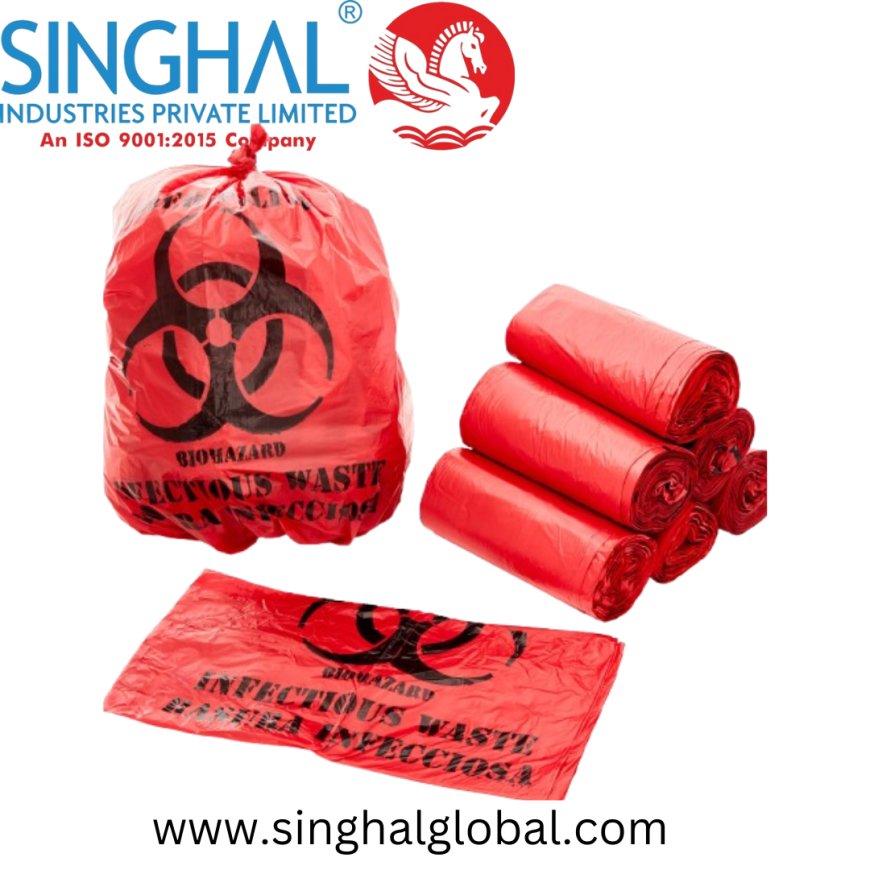Essential Safety: The Ultimate Guide to Choosing and Using Biohazard Bags

Biohazard bags play a critical role in maintaining health and safety standards in medical facilities, laboratories, and other industries handling hazardous materials. Proper disposal of biohazardous waste not only ensures a clean environment but also prevents the spread of diseases and contamination. With the wide range of Biohazard garbage bags available in the market, it can be challenging to determine the right type and usage. This guide will help you understand their significance, uses, and how to select the most suitable ones for your needs.
What Are Biohazard Bags?
Biohazard bags are specialized containers designed to collect, store, and transport hazardous biological waste safely. This waste may include items contaminated with blood, bodily fluids, infectious agents, or other potentially harmful materials. These bags are often marked with a universal biohazard symbol to warn handlers of the potential dangers within.
Manufactured from durable and leak-proof materials like polyethylene, biohazard garbage bags are color-coded to indicate the type of waste they hold. These color codes, as mandated by local and international regulations, are essential to ensure proper segregation and disposal of biomedical waste.
Importance of Using Biohazard Bags
Improper disposal of biohazardous waste can lead to severe environmental and health consequences. It can expose healthcare workers, sanitation personnel, and the public to infections, injuries, and toxic substances. Biohazard bags provide a secure method to dispose of such waste, reducing the risk of accidental exposure and contamination. Furthermore, correct usage ensures compliance with waste management laws and regulations, avoiding legal penalties.
Types of Biohazard Bags
The type of biohazard bag you choose depends on the nature of the waste being handled. Here are the most common categories:
- Red Biohazard Bags: These are primarily used for anatomical and infectious waste, such as human tissues, blood-soaked materials, and laboratory cultures.
- Yellow Biohazard Bags: These are commonly referred to as yellow bag biomedical waste bags and are used for non-infectious hazardous materials. Examples include contaminated PPE (personal protective equipment), syringes, and discarded medicines.
- Black Biohazard Bags: Designed for non-hazardous waste that cannot be recycled, such as disposable items and office trash contaminated with chemicals.
- Transparent or Blue Bags: Used for recyclable waste, like glass or plastics, in certain regions.
Each color coding aligns with specific guidelines to streamline waste management, making it easier for waste disposal facilities to process them efficiently.
Biohazard Bags
The applications of Bio medical waste bags uses extend beyond hospitals and clinics. Their uses include:
- Healthcare Facilities: For disposing of contaminated gloves, syringes, bandages, and other single-use items.
- Laboratories: To safely collect and transport chemical and biological samples.
- Veterinary Clinics: For handling pet waste and medical materials used in treating animals.
- Research Institutions: To dispose of experimental materials and biological specimens securely.
- Residential Settings: For home care patients managing medical treatments, such as insulin injections.
Proper usage is crucial in all these environments to minimize health risks and environmental damage.
Choosing the Right Biohazard Bag
When selecting biohazard garbage bags, several factors must be considered:
- Material Quality: Ensure the bag is puncture-resistant and leak-proof. High-quality polyethylene bags are a reliable choice for most biomedical waste.
- Size and Capacity: Choose a bag that can accommodate the volume of waste generated without overfilling. Overfilled bags pose a higher risk of spills and contamination.
- Color Coding Compliance: Select bags that adhere to local regulations for color coding and labeling.
- Heat Resistance: In some cases, biohazard bags need to be incinerated. Bags made from heat-resistant materials are ideal for such applications.
- Ease of Sealing: Bags with secure tie closures or drawstrings prevent accidental openings during handling.
Guidelines for Using Biohazard Bags
Proper handling of biohazard bags is essential to maintain safety and compliance. Follow these best practices:
- Segregation: Ensure waste is segregated at the point of generation. For example, place infectious waste in red bags and non-infectious hazardous waste in yellow bag biomedical waste bags.
- Do Not Overfill: Leave sufficient space at the top of the bag for secure sealing.
- Proper Labeling: Clearly mark each bag with the appropriate biohazard symbol and other required information.
- Wear Protective Gear: Always use gloves and other PPE when handling biohazard garbage bags to avoid direct contact with hazardous materials.
- Dispose of Promptly: Do not allow waste-filled biohazard bags to accumulate. Ensure they are regularly collected and sent to authorized waste treatment facilities.
- Training: Educate employees and staff on the correct handling, segregation, and disposal of biomedical waste.
Environmental Impact and Sustainability
Biohazard bags are indispensable in waste management, but their use also raises environmental concerns due to their non-biodegradable nature. To mitigate this impact, manufacturers are now producing eco-friendly alternatives, such as biodegradable and compostable biohazard bags. Switching to sustainable options and reducing waste generation can significantly minimize environmental harm.
Additionally, waste management systems should prioritize recycling and energy recovery wherever possible. For instance, some materials, like glass and plastic, can be sterilized and recycled, reducing the burden on landfills and incinerators.
Conclusion
The proper selection and usage of Yellow bag biomedical waste are vital in preventing contamination, ensuring public health, and protecting the environment. By adhering to regulations, understanding the applications of biomedical waste bags, and choosing the right materials, facilities can achieve safe and efficient waste management. Incorporating eco-friendly practices and training staff on proper disposal procedures further enhances the safety and sustainability of biohazardous waste handling.
Whether you’re managing medical waste in a hospital or disposing of contaminated materials in a laboratory, biohazard garbage bags are your first line of defense against the spread of disease and environmental pollution. By making informed choices, you contribute to a healthier and safer world.
Frequently Asked Questions (FAQs)
1. What are biohazard bags made of, and are they recyclable?
Biohazard bags are typically made from durable polyethylene or similar materials. While most standard biohazard bags are not recyclable due to contamination, clean and sterilized biohazard bags made from recyclable materials can be processed in specialized facilities. To reduce waste, opt for biodegradable options where possible.
2. Can yellow bag biomedical waste be incinerated?
Yes, yellow bag biomedical waste is often incinerated to ensure complete destruction of hazardous materials. However, it is crucial to ensure the bags are heat-resistant and comply with local incineration guidelines to avoid releasing toxic fumes.
3. How do I ensure compliance with biohazard bag disposal regulations?
To ensure compliance, familiarize yourself with local and international waste management guidelines. Use the appropriate color-coded biohazard garbage bags, label them correctly, and partner with licensed waste disposal services. Regular staff training on waste segregation and handling is also essential.
What's Your Reaction?


























